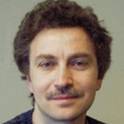
For nearly half a century the supersolid phase of matter has remained mysterious, not only eluding experimental observation, but also generating a great deal of controversy among theorists. The recent discovery of what is interpreted as a non-classical moment of inertia at low temperature in solid 4He [E. Kim and M.H.W. Chan, Nature 427 225 (2004a); E. Kim and M.H.W. Chan, Science 305 1941 (2004b); E. Kim and M.H.W. Chan, Phys. Rev. Lett. 97 115302 (2006); A.C. Clark and M.H.W. Chan, J. Low Temp. Phys. 138 853 (2005)] has elicited much excitement as a possible first observation of a supersolid phase. In the two years following the discovery, however, more puzzles than answers have been provided to the fundamental issue of whether the supersolid phase exists, in helium or any other naturally occurring condensed matter system. Presently, there is no established theoretical framework to understand the body of experimental data on 4He. Different microscopic mechanisms that have been suggested to underlie superfluidity in a perfect quantum crystal do not seem viable for 4He, for which a wealth of experimental and theoretical evidence points to an insulating crystalline ground state. This perspective addresses some of the outstanding problems with the interpretation of recent experimental observations of the apparent superfluid response in 4He (seen now by several groups, e.g. A.S. Rittner and J.D. Reppy 2006; M. Kondo, S. Takada, Y. Shibayama and K. Shirahama, Proceedings of QFS2006, Kyoto, Submitted to J. Low Temp. Phys.; A. Penzyev, Y. Yasuta and M. Kubota, Proceedings of QFS2006, Kyoto, Submitted to J. Low Temp. Phys., cond-mat/0702632.) and discusses various scenarios alternative to the homogeneous supersolid phase, such as superfluidity induced by extended defects of the crystalline structure, including grain boundaries, dislocations and anisotropic stresses. Can a metastable superfluid 'glassy' phase exist, and can it be relevant to some of the experimental observations? One of the most interesting and unsolved fundamental questions is what interatomic potentials, given the freedom to design one, can support an ideal supersolid phase in continuous space, and can they be found in Nature.
Available at: http://works.bepress.com/nikolai_prokofev/74/
